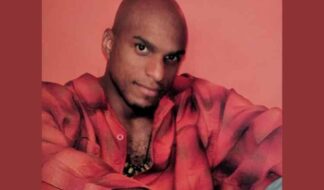You can't judge a gay book by its cover. Its author. Or, its nom de plume.
Case in point: Groundbreaking 1951 sociological expose, "The Homosexual in America." Gay name: Donald Webster Cory. Real name: Edward Sagarin.
Cory's expose came three years after Alfred Kinsey's shelf-shocker, "Sexual Behavior in the Human Male." Both authors provide in-your-face facts, focus, insights on a previously little discussed and statistically undocumented subject — male homosexuality.
Kinsey, a biologist and an authority on gall wasps, turns his scientific cataloging to humans. His research institute colleagues interviewed 5,940 men about their sex lives. The result: 804 pages of tables, charts, dull but very shocking statistics.
Data show 37 percent of the population had at least some overt gay experience to ejaculation; 4 percent of whites are exclusively homosexual after adolescence. Statistics for blacks, undocumented.
Sixty-seven years ago your average Joe believed he had never met a homosexual; that fags, fairies, fruits were rare. But, even so: queers were perverts, mentally unbalanced, to be incarcerated, punished, justifiably shunned by church, family, employers, military, government; to be dealt with by psychiatrists and/or police. (Sound just vaguely familiar?)
Sagarin, a married bisexual sociologist and trained criminologist (and perfume authority), documents gay life as a social phenomenon and also as a participant observer in his "The Homosexual in America."
He provides a fair-minded understanding of gay persons, their subculture, slang, sexual acts, their basic contrast to the so-called heterosexual "norm."
"As a minority homosexuals are caught in a particularly vicious circle," says Sagarin, writing as Donald Webster Cory, a pen name gleaned from Andre Gide's 1924 gay novel "Corydon," first published in America in 1950.
"The shame of belonging and the social punishment of exposure are so great that pretense is universal. Until we are willing to speak out openly and frankly in defense of our sexuality, and to identify ourselves with the millions pursuing these activities, we are unlikely to find the attitudes of the world undergoing any significant change."
Nonetheless, for all Cory/Sagarin's advocacy on the behalf of America's gay population, Sagarin very cautiously, quietly, only in 1962, joined the homophile Mattachine Society. His participation was supportive but "please don't rock my boat." He wanted no militant advocacy for gay civil rights.
As a sociologist undergoing psychotherapy himself, Sagarin believed that homosexuality was a pathology; that homosexuals should seek Freudian analysis. Few of his friends or colleagues knew that he was the famous — at least to a handful of like closet-cases — Donald Webster Cory. (His second gay book is "21 Variations on a Theme.")
Sagarin's identity remained "hush hush" until a 1974 American Sociological Society convention held in Montreal. He appeared on a panel, "Theoretical Perspectives on Homosexuality," speaking strongly against liberationist scholarship. A colleague, Laud Humphreys, took umbrage — and perhaps some polymorphous perverse delight — and blew Sagarin's cover by repeatedly ad libbing, "If you say so, Mr. Cory."
Sagarin broke down in tears; withdrew shortly thereafter from all issues concerning homosexual advocacy. He died in 1986, age 73. Both of his books remain classics.









